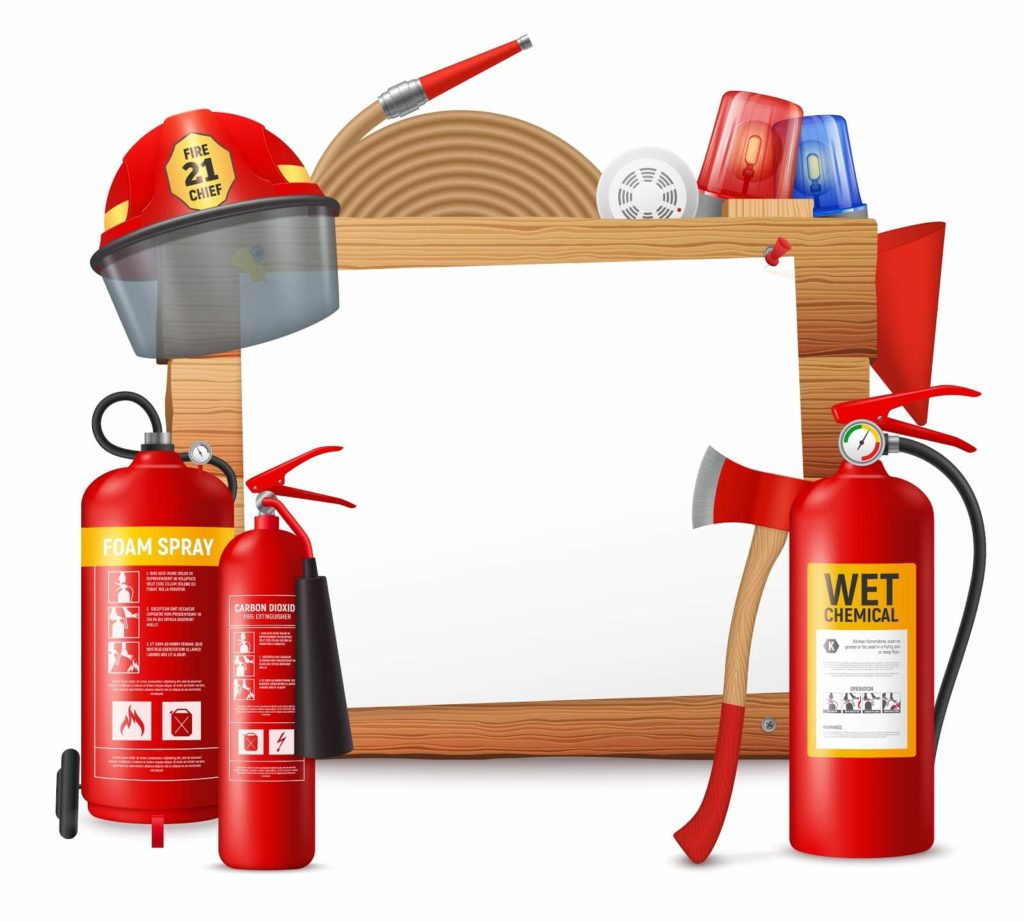Fire safety is essential in many contexts, including homes, workplaces, public spaces, and industrial sites. It includes a variety of steps, plans, and techniques intended to put out probable fires, lessen the damage they can do, and respond quickly if one does start.
It is essential to practise fire safety to safeguard people, property, and the environment from the devastating and frequently fatal effects of flames.
In this blog, you’ll learn how fire safety works and how you can mitigate fire hazards by taking specific steps. Let’s get started.
What is fire safety?
The term “fire safety” refers to a variety of measures and procedures used to safeguard the environment, people, and property from flames. It entails steps like fire prevention, and early fire detection with the use of alarms and sensors, suppression techniques like sprinkler systems and fire extinguishers, planning and practising evacuations, instruction on the proper procedures to follow in an emergency, and adherence to fire codes and laws.
Fire safety strives to reduce the risks and effects of fires, increase people’s well-being and protect property by incorporating these techniques into building design, workplace procedures, and community preparation.
So, to put it simply, fire safety refers to the actions and steps put in place to mitigate the harm and damage caused by fire. This can include a lot of things, from steps taken to prevent uncontrolled ignition of fire to actions taken to prevent the fire from spreading once it starts and everything in between.
What are the objectives of Fire Safety?
- Preventing fires.
- Reducing the dangers caused by flames.
- Ensuring the residents' safe evacuation in case of emergency.
- To comply with local laws, regulations, and standards that specify the necessary safety measures to reduce the possibility of fires and their catastrophic effects.

What should you do when you face Fire?
When dealing with fire, it’s critical to put your own and others’ safety as the number one priority. First, if a nearby fire alarm is available, sound it to warn everyone.
If the fire is small, then use a suitable fire extinguisher to try to put it out while keeping a safe distance. If the fire spreads quickly or you can’t put it out, you should leave immediately and seek help from emergency services.
While exiting be sure to stay away from lifts and stick to designated escape routes. To avoid burn injury try to check If doors feel warm to the touch before opening them, if they feel warm then they might be hot and cause burn injuries.
If smoke is prevalent, keep your head down and near the ground, where the air is more apparent.
As soon as you reach a safe place and feel secure, dial emergency services. Remember, After you’ve evacuated the building, do not return because your safety comes first.
How to prevent a fire?
You can prevent fires by being vigilant, cautious, and prepared. To reduce the likelihood of a fire, one should routinely check their living and working areas for potential fire hazards.
Here are some examples of potential fire hazards:
- Defective wiring
- Overloaded outlets
- Combustible goods close to heat sources.
Early warnings can be obtained by installing smoke detectors on each floor and in essential locations, such as bedrooms and the kitchen, and by monitoring them frequently.
Adopting safe cooking practices, such as never leaving stovetops unattended and keeping combustible items away from the burner, is crucial. Additionally, safely handling and storing flammable materials like gasoline and cleaning supplies can dramatically lower the risk of Fire.
A well-thought-out evacuation plan with defined meeting spots, having fire extinguishers on hand, and understanding how to use them will further improve your fire safety.
How should a restaurant maintain Fire Safety?
Maintaining fire safety at a restaurant is essential to guarantee both the security of patrons and workers as well as safeguard the business from any fire-related incidents. The following recommendations and actions can assist a restaurant in maintaining fire safety:
- Fire Safety Equipment and Systems: Install and routinely maintain smoke detectors, fire alarms, and other fire detection and alarm systems throughout the restaurant.
- Make sure the fire alarm system is routinely tested and inspected, following local laws.
- Install automated sprinkler systems and fire extinguishers in crucial dining and kitchen sections of restaurants.
- Kitchen Safety: Keep combustible materials far from cooking equipment by maintaining appropriate clearance.
- List ItemRoutinely clean and degrease kitchen hoods and exhaust systems to avoid grease accumulation, which can cause widespread harm.
How can you prevent Fire in the workplace?
To safeguard property, maintain business continuity, and assure employee safety, workplace fire prevention is crucial. The following actions can be taken to stop workplace fires:
- Fire Risk Evaluation: To find potential fire dangers, ignition sources, and flammable products in your workplace, do a thorough fire risk assessment. The basis for your fire prevention strategy will be this assessment.
- Fire detection system installation and upkeep: Install fire alarms, heat detectors, and smoke detectors throughout the building. Check and test these systems frequently to make sure they are operational and have new batteries.
- Plans for emergency exits and evacuation: Emergency exits and escape routes should be properly marked with signs. Create an evacuation strategy and let all staff know about it.
- Firefighting Supplies: Place the necessary firefighting supplies, such as hose reels, fire extinguishers, and fire blankets, in easily accessible places. Employees should receive proper instruction on how to use these firefighting tools.
- Electrical Safety: To avoid short circuits and overheating, regularly inspect and repair electrical systems and equipment. Avoid using cords or plugs that are damaged and overloading the outlets.
- Storage of Flammable Materials: Store flammable goods away from potential ignition sources in specially designated spaces with adequate ventilation. For the storage and handling of flammable substances, use authorised containers. Store flammable goods away from potential ignition sources in specially designated spaces with adequate ventilation. For the storage and handling of flammable substances, use authorised containers.
- Be a good housekeeper: Maintain a clutter-free and clean workspace to avoid the buildup of dust, trash, and other combustible items. Make sure storage areas are organised and trash is disposed of properly.
- Smoking Guidelines: Have a rigorous no-smoking policy at work, especially in locations containing flammable materials.
- Equipment for heating and cooking: If there is a kitchen or cooking area at your place of business, make sure the cooking equipment is utilised and maintained correctly. Use caution when using portable heaters or other heating appliances that could catch fire.
- Education and Training: All personnel should attend regular fire safety training courses to learn about the risks of fire, how to prevent them, and how to respond in an emergency. Employees should regularly participate in fire drills to make sure they are prepared to act in an emergency.
You may greatly lower the risk of workplace fires by adhering to these recommendations and fostering a culture of fire safety awareness, which will safeguard both workers and property.
Conclusion
Whether at home or work, maintaining a secure environment requires attention to fire safety. Preventing fires and lessening their effects is the main goal of fire safety.
This entails seeing potential risks, encouraging moral conduct, and maintaining suitable equipment.
A well-practised emergency response plan and early fire detection devices like alarms and detectors are essential for a safe evacuation. Frequent instruction and training, as well as having access to firefighting equipment, improve preparedness. Risques are reduced by appropriate storage, electrical safety, and unambiguous smoking laws. Fire drills serve to reinforce appropriate reactions, and a culture of safety is maintained through a commitment to continuous improvement. In the end, preventing the potential destruction of fires and their effects is a communal responsibility.







 August 29, 2023
August 29, 2023






